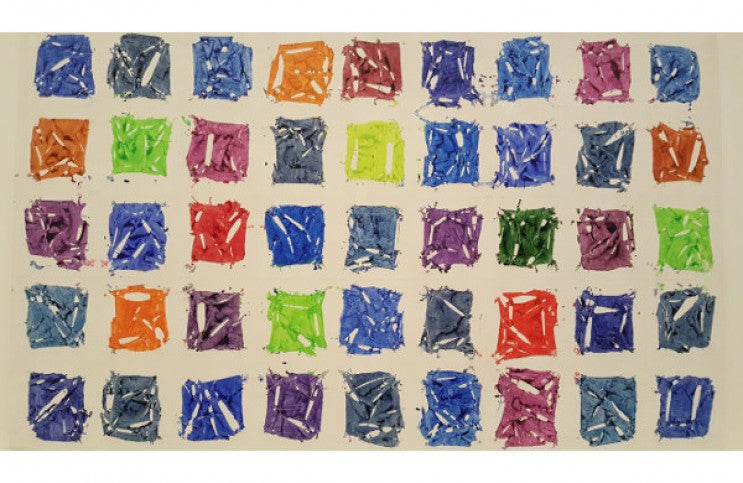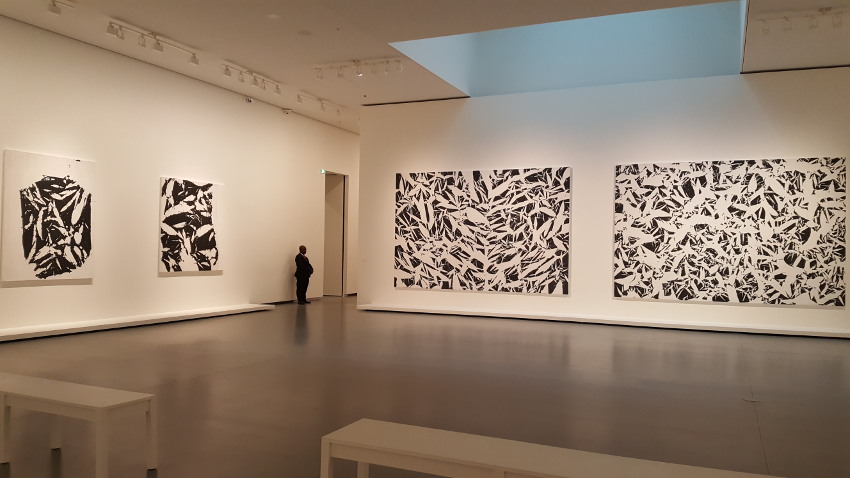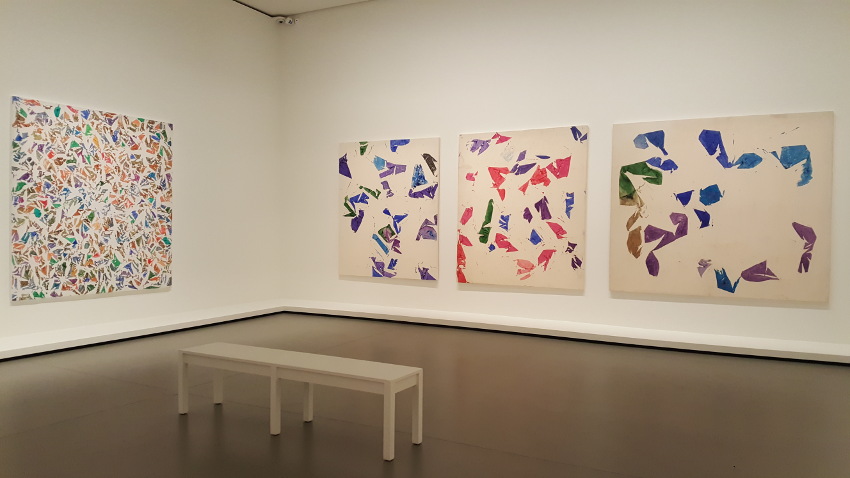
Simon Hantaï. Between Invisibility and the Persistence of Vision
Simon Hantaï is the painter of absence, invisibility, and withdrawal. The essence of his art can be captured in the empty spaces between one color and another, in his pictorial and conceptual interstices. In Hantaï’s paintings, the cumbersome presence of the artist deliberately disappears, leaving only an evanescent halo. His art is primarily known in the realm of Abstract and Informal Art, albeit with a personal style characterized by deep conceptual research and techniques of his invention, like the best-known pliage.
Born in Hungary in 1922 but a naturalized French citizen, Hantaï studied at the Hungarian Academy of Fine Arts in Budapest, openly embracing the anti-nazi struggle and exposing himself as an avowed communist. His artistic career was strongly influenced by his journeys: first in Italy, in the footsteps of a modern Grand Tour, where he was enchanted by the hieratic iconography of Byzantine Art in Ravenna and the formal balance of the Renaissance, then in France, where he definitively settled in 1948.
One hundred years after his birth, the Louis Vuitton Foundation dedicates to him a largen scale retrospective exhibition in Paris, curated by Anne Baldassarri with the support of the Hantaï family. The exhibition traces the artist's multifaceted creative path, characterized by various formal, and technical phases that imply an ever-changing flow of thought. Transitions from one style to another are never by chance: they embody intellectual reflections. For this reason, his legacy transcends the boundaries of painting, leaving echoes in numerous abstract artists and involving philosophy as well.
From Surreality to Abstraction
Moving to France in 1948 was decisive for the young Hantaï. In Paris, the Hungarian painter soon knew the group of the Surrealists. His meeting with the poet André Breton, in particular, brought him closer to the innovative concepts of automatism. Drawing words and images without the interference of reason, completely instinctively or through random criteria, allowed the hidden images of the unconscious to emerge, free from the "dictatorship of the logic." Hantaï's early paintings were, in fact, figurative oneiric paintings.
However, in 1955 the painter soon abandoned the figurative style for an early type of experimental gestural abstraction. The transition was not for him a contradictory caesura. The painter grasped the gestural spontaneity of Surrealism, applying automatic techniques such as frottage, scraping, or decalcomania, and focusing on an art free from the artist's preconceptions. This shift was also influenced by the bursting discovery of Jackson Pollock’s Abstract Expressionism, which brought him closer to a more lyrical abstract art. However, in addition to contemporary references, he also retained the influence of the art of the past, like the Byzantine one. Hantaï's paintings of the 1950s were truly cultivated media: they embodied echoes of past and present cultures, combining new and ancient gestures.

Simon Hantaï. The Centenary Exhibition at the Louis Vuitton Foundation. Paris, France. 2022. Installation view
The Spaces Between the Folds
The 1960s significantly marked Simon Hantaï’s career with the invention of the pliage technique. Pliage was a new working method that consisted of knotting, folding, and crumpling fabrics to let emerge varied configurations on the canvas. Artworks realized through pliage were consecrated in 1967, with the exhibition curated by the art dealer Jean Fournier. Between 1960 and 1982, Hantaï produced respectively eight series, like Mariales (Marian Paintings) and Panses each corresponding to different procedures, even going to apply his technique on wall paintings. His practice is always characterized by seriality, as a continuous search for procedural objectivity. Looking at Hantai's artworks that come to life from folds and white absences, one suddenly thinks of Henri Matisse's gouache-colored paper cut-outs, which created dances of spaces and forms.
In the 1970s, the pliage process takes on more structured forms and regular patterns. This is the case of the Blancs series (1973-1974), and the more famous Tabulas, from the Latin word tabula (table), grids of single-color squares separated by uniform unpainted spaces. In contact with each other, the pattern creates an optical effect of iridescent color, thanks to the phenomenon called retinal persistence. Our eyes register the contrast between the intense colors and white areas, emanating a tinted halo. In the Lilas paintings, for example, the cool white of the acrylic paint placed on the warmer white of the canvas creates a surprising lilac-hued coloration. The Tabulas series can thus be seen as an optical experiment to train the vision to perceive color even in its actual absence: an exercise in seeing and understanding invisibility.

Simon Hantaï. The Centenary Exhibition at the Louis Vuitton Foundation. Paris, France. 2022. Installation view
The Vanishing Painter
In the 1980s, Hantaï became increasingly invisible himself: he used lighter and thinner media; he realized artworks with defined but evanescent boundaries, and he became an elusive and unreachable presence. In the summer of 1982, the painter officially represented France at the 40th Venice Art Biennale. The event, instead of galvanizing him, permanently distanced him from the art world and induced him to retire to private life. Hantaï perceived the risk of art as a meaningless spectacle and feared an odoriferous art in which the painter's gesture dominates the canvas. Instead, his painting was strictly connected to the cognitive mechanisms of vision and thought. It is this strongly theoretical undercurrent that led him to often bond more with philosophers than with other painters, like Derrida, Nancy, and Deleuze.
This is where Hantaï’s modernity lies: he created art that behaves like abstract thought. His legacy continued to resonate thereafter, like in Michel Parmentier's minimalist paintings, or in the iridescent grids of Daniel Buren. Despite his disappearance as an artist from the art system scene, Simon Hantaï’s immaterial colors imprinted themselves in the visual memory of artists of the following generations: like an iridescent halo that persists on the canvas and in our retinas.

Simon Hantaï. The Centenary Exhibition at the Louis Vuitton Foundation. Paris, France. 2022. Installation view
All images courtesy of IdeelArt.






